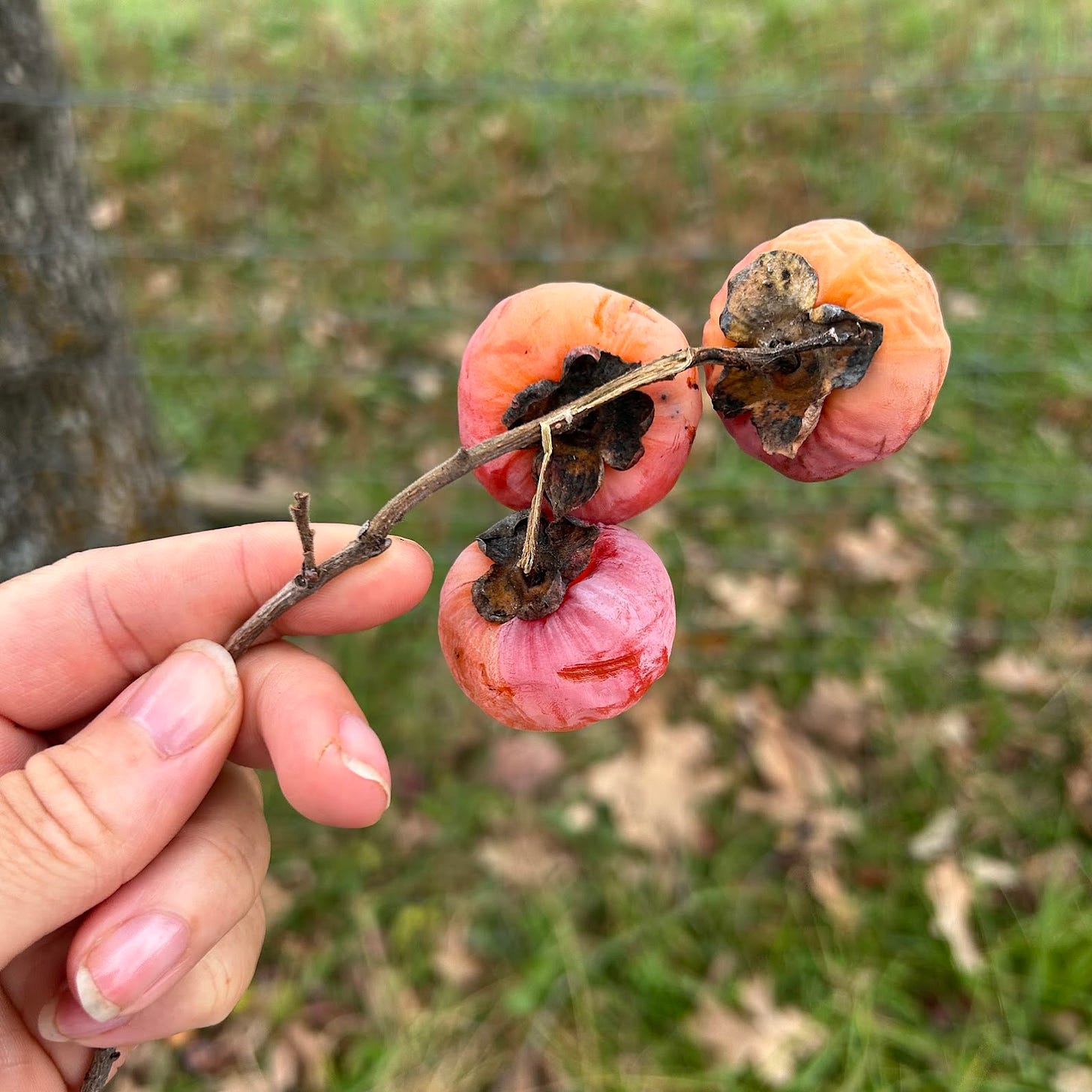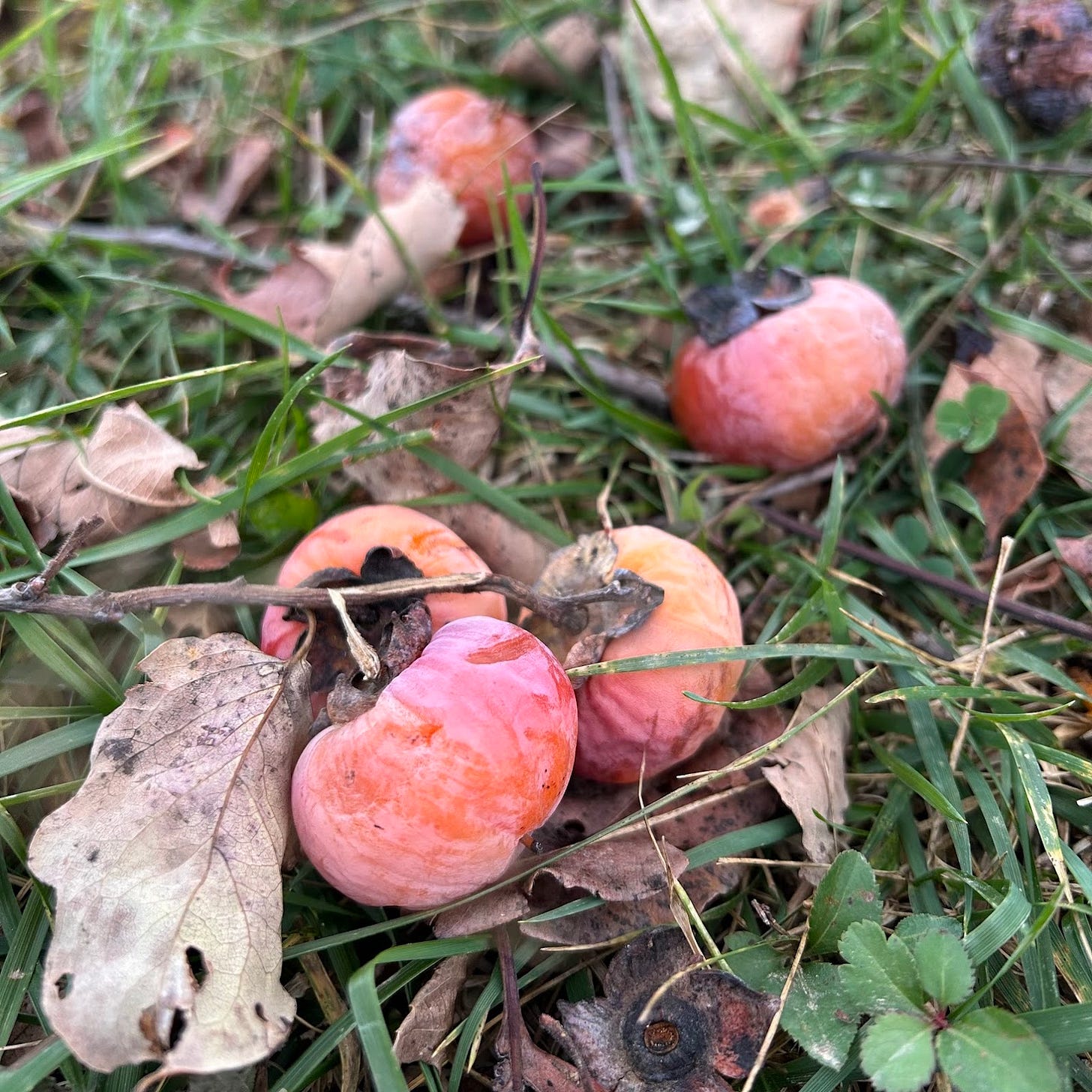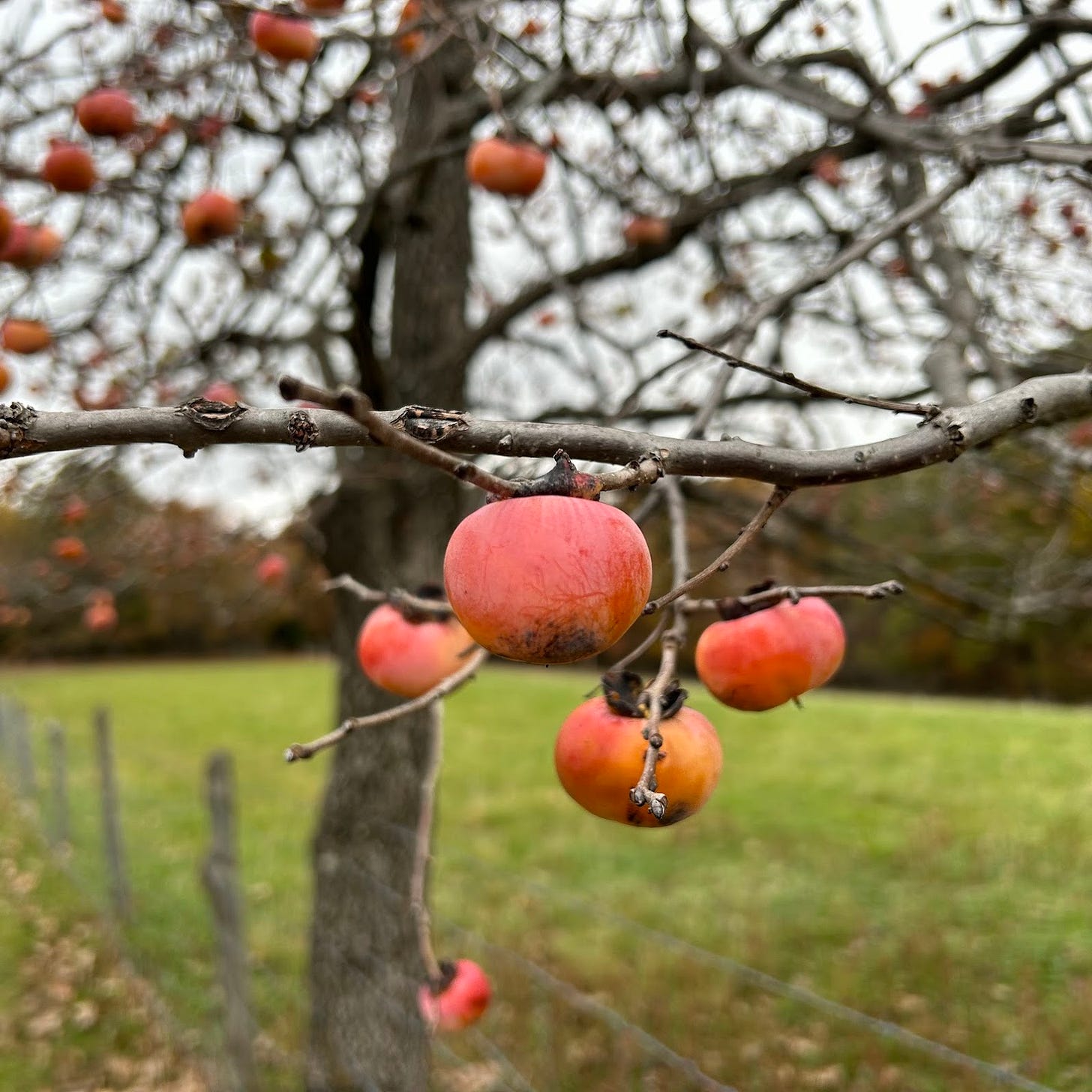Foraging Guide: Persimmons
Are these fruit rotten? No, they're really supposed to look like that!
Persimmons may be one of the more overlooked wild foods by humans, considering they ripen at a time we begin hunkering down indoors. Meanwhile, deer, turkeys, squirrels, and birds (among other animals) eagerly await these fruits that only ripen once a chill has settled in the air. But why let wildlife have all the fun? Persimmons are easy to harvest and edible right from the tree, even if their soft appearance can give off a “should I really eat this?” vibe. Because, yes, you really should.
When to hunt: October and November
Persimmon trees (Diospyros virginiana) fruit throughout fall, though October and November tend to provide the best pickings. Around the first frost of the season, the palm-sized fruits slowly transform from a shade of green to an orange hue (some turn slightly red). Persimmons also soften to the touch, which is the best indicator of ripeness. The fruit may develop some small wrinkling in particularly blustery temperatures, but that doesn’t mean they’re inedible; I’d compare it to how apples stored in the refrigerator develop a softer skin, except this fridge is outside.

How to harvest: Collect from the trees and ground
As persimmons soften, they’re easy to pull directly from the tree. Some experts will recommend you use pruners, though the wild trees I’ve harvested have easily let go of their fruits without tools. You’ll likely find many persimmons on the ground, and there’s no reason to waste them. Collecting windfall persimmons will quickly fill your basket (just be sure they’re not rotten or stepped on).
Harvested persimmons can be stored in the fridge until you’re ready to use, but don’t wait long. Like all fresh fruit, these tiny, tasty globes have a short shelf-life of just a few days. They’re incredibly sweet, containing as much as 34% sugar content. You can turn them into persimmon pudding, dry them for snacking, or enjoy them fresh — just don’t let them linger.

Foraging notes you should know
Here’s the deal with persimmons: you’ll never forget the first time you’ve had one that wasn’t quite ready. Before they’re fully ripe, persimmons have a particularly astringent flavor that tastes not so great. The tannins in the fruit can make your mouth pucker and feel disgustingly dry. It makes for a particularly successful prank to pull on younger siblings who don’t know any better (hello, fellow elder sisters).



